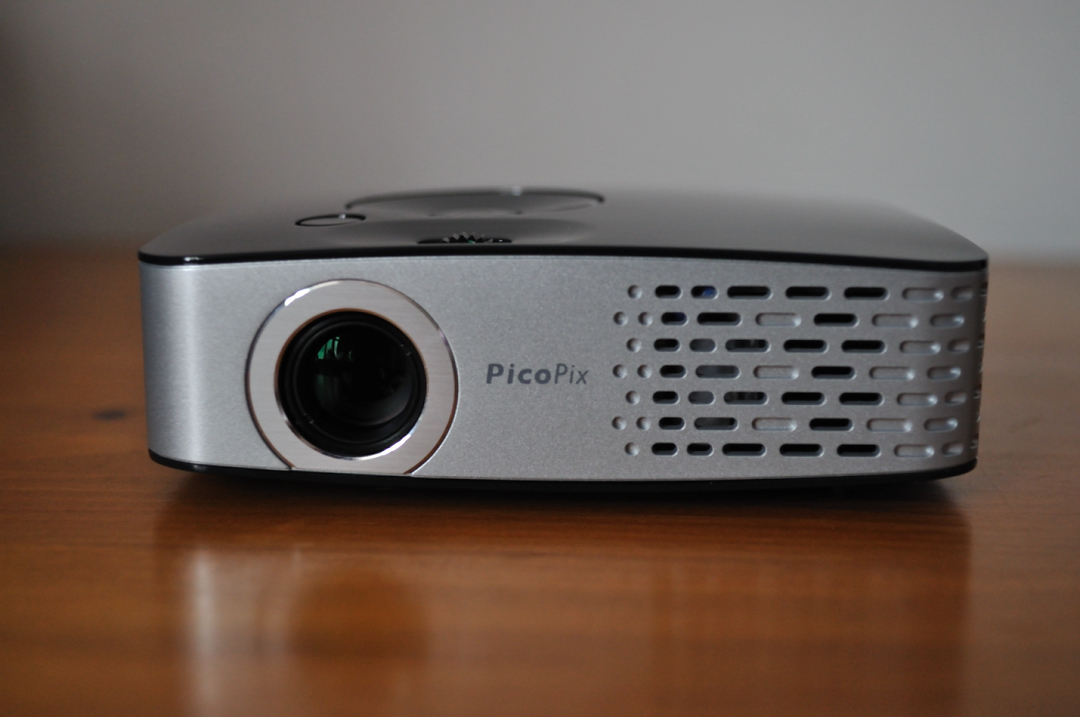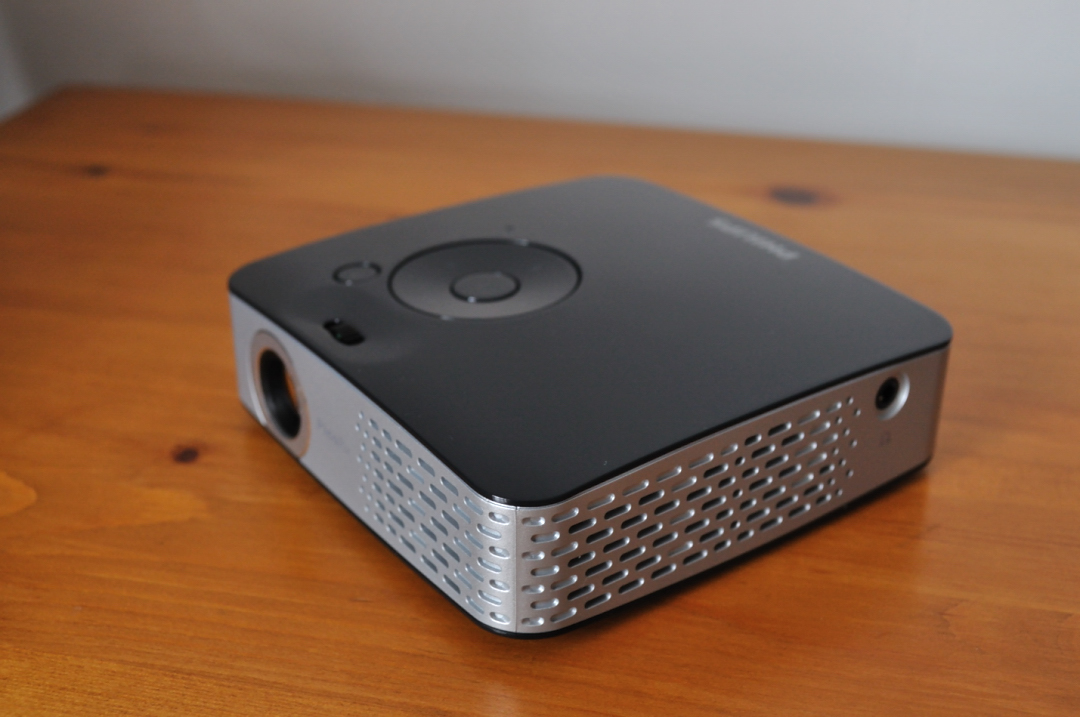
I've used many projectors over the years, from '60s Carousels to the most modern HD kind, and - apart from resolution - they all tend to be the same.
Sure, some can run with more light leaking in than others, while others are a bit quieter, but they all share three common traits: they're expensive, bulky, and much better for viewing games on than a TV.
Seeing the PicoPix portable projector for the first time was something of a shock. Indeed, anyone accustomed even to modern HD projectors will be taken aback by just how small this miniscule machine is.
Measuring in at slightly bigger than an iPod touch (albeit considerably fatter), Philips’s PicoPix is designed for those of us with holiday snaps and games to show off to our friends, without our having to get everyone clamouring around the tiny touchscreen phone.
But does it also have the power lurking inside to make it a worthy alternative to bigger, bulkier, and more expensive devices?
Shine a lightFirst impressions are dominated by the portability of the PicoPix. Coming with its own little tripod and carry case (which, alas, doesn’t allow said tripod to fit inside), Phillips aren’t joking around with the name - it’s impressively compact.

Handily, the box houses a number of useful leads and accessories, including an AC adaptor (to charge the battery), a teensy remote control, a USB converter (small to big), and your normal red, yellow, and white AV connections.
Disappointingly, but not unsurprisingly, there aren’t any Apple-specific leads enclosed, so if you’re looking to run your iPhone and iPad through the device as the front of the box proudly claims, you’re going to have to purchase extra kit before getting started.
More problematic is the lack of HDMI-in: instead, the PicoPix relies on the ext. A/V wires for all streaming playback.
Yes, sure, you could load photos, music, and videos onto a memory stick (or just stick in an SD card) and play them from there, but this makes the projector pretty useless for those wanting to project their Android phone's display onto the wall.
Get connected
After scouring my room for a compatible device (the PS3 didn’t work for some reason, nor the iPod touch without its wire), I settled on my trusty Digital SLR’s memory card to try out the image quality.
The intensity of the brightness from the lamp means that you’re going to need to close the blinds, but otherwise the setup was painless - just wait for the charging light to go green and then flick it on.
A small drop-down stand helps prop the PicoPix up, snapping into position once it’s fully in place. After a wee bit of tinkering with the slightly stiff focus dial, I was watching some fantastic footage I took during the Chillingo preview event last month (you can see it on YouTube).
All the colours of
The PicoPix doesn't exactly produce the sharpest of images in terms of colours - there’s a bit of saturation and some ‘rainbow’-like hues to the edges when motion shake was high - but it’s still surprisingly effective, especially as the image far outstrips the size of the projector itself.
The speakers are tinny, but loud enough for a quiet room of enthralled moviegoers. There is, thankfully, a 3.5mm jack socket for a pair of headphones, so you won’t need to lose out on bass should you watch alone.
Given the size and portability of the device, the Philips PicoPix is an impressive little machine. Its software seems robust, with easy-to-navigate menus, and the range of inputs (while not ideal) does tick most of the boxes.
Compromises to audio and visual quality, as well as the lack of HDMI-in, are undesirable, but the PicoPix still offers up a decent alternative to pushing your phone in other people’s faces.
Philips PicoPix

